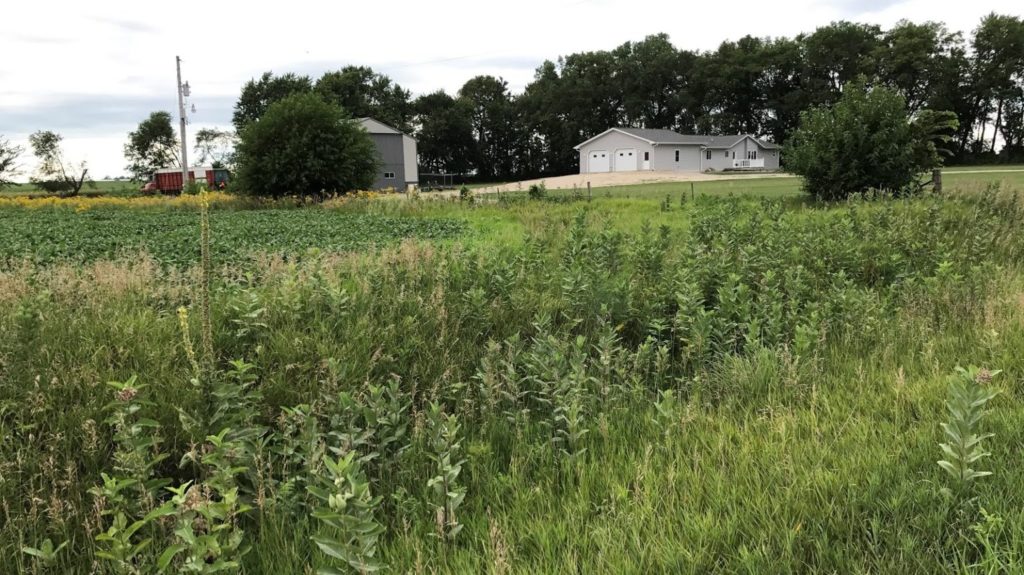
One of the many requests the world makes to farmers and other land managers is restoring pollinator populations by implementing pollinator-friendly conservation practices on their lands. This month, we share a conservation principle that we hope lightens the burden on farm managers: simply stop mowing, at least during the month of May. Last year, we highlighted the relatively new conservation campaign called No Mow May. It asks landowners to forego mowing their lawn between May 1 and 31 to allow flowering species in lawns to bloom, providing a nectar feast for pollinators when there are relatively few native nectar resources available. According to an article by Molly Martin for Bee City USA, No Mow May is a conservation initiative first popularized by Plantlife, a British conservation charity working nationally and internationally to save threatened wildflowers, plants and fungi.
Farmers for Monarchs has a proud history of asking land managers to implement pollinator-friendly mowing practices, particularly in the spring when flowering plants bloom. We recently produced a one-page document detailing a few practices for natural areas:
- Understand monarch breeding and migration cycles to provide a timeframe of when it is safest to mow.
- When mowing, do not cut the entire habitat, but rather stick to targeted areas.
- Use a minimum cutting height of 8-12 inches to minimize impact on native plants.
- Mow at reduced speeds and use a flushing bar to allow wildlife to escape.
- Analyze whether mowing more than once every couple of years is a necessary expense.
Monarch Joint Venture has also created a helpful one-page document called Mowing and Management: Best Practices for Monarchs. The document emphasizes the importance of awareness of habitat needs and timing for whatever species of interest you are managing for, including monarchs. The map provided on the handout depicts clear management windows in different regions that can be used to inform monarch-safe management practices like burning, mowing, grazing, or targeted pesticide application.
One example of how a commercial producer implements pollinator-friendly mowing practices comes from Mark Sundberg, a commercial beekeeper and farmer in Minnesota, who we interviewed last month. During the interview, he explained how he approaches mowing areas containing his pollinator habitat. Sundberg mows his land in stages, only one-third of his acreage at a time, to allow plants to bloom providing consistent forage for pollinators. Listen to his explanation below.
Whether you’re a commercial agriculture producer or are just maintaining your residential lawn, there are a host of mowing considerations that can support pollinators! Chief among them, at least in the month of May, is to do nothing. During No Mow May, take a break and avoid mowing your land to give a break to the flowering plants so they can bloom and provide nutritious forage. They will fuel pollinators, whether they are monarchs, hungry upon arrival during their spring migration northward, or bees seeking pollen and nectar to raise their brood.

